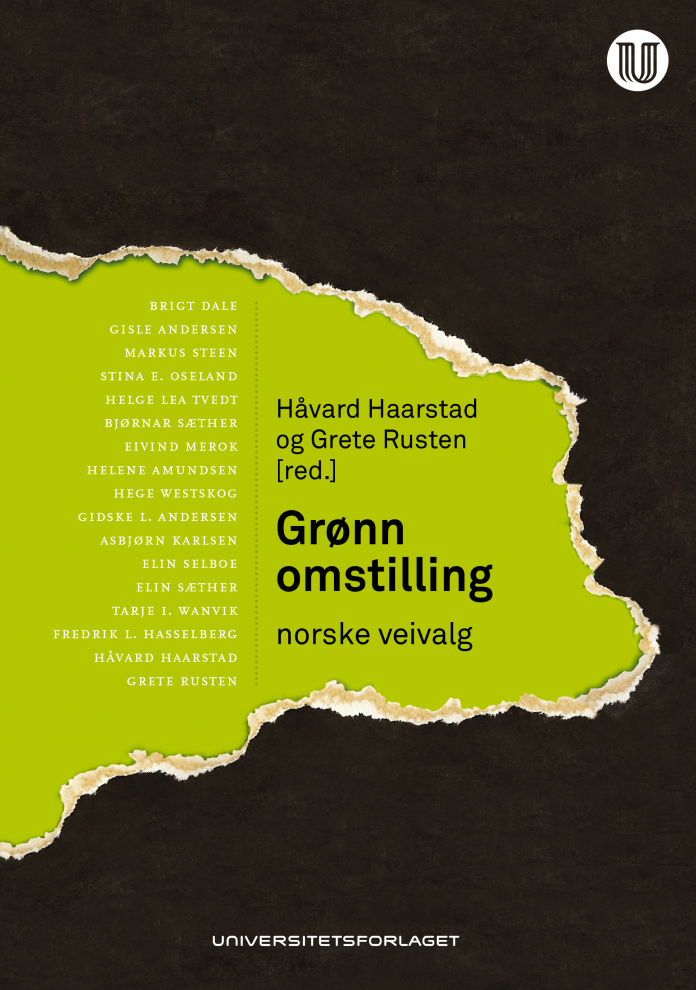Forlag: (Universitetsforlaget)
(THIS ARTICLE IS MACHINE TRANSLATED by Google from Norwegian)
In the case prose market, we encounter an increasing number of books that illustrate the problem of green shift. Some ask big questions throughout our way of life, while others go more specifically into selected fields. anthology Green conversion – Norwegian road choices joins in with the latter. The book is written in the spirit of enlightenment, and some may say that it is too professionally confident to be reviewed in a newspaper. But such books can be of great value. We who spend the most energy on discussing the big questions regarding social development benefit from reading contributions to a more down-to-earth clarification of our specific choices.
Modernization or transformation. The book states that the green transition characterizes both the administration, the business community, civil society and the public debate. It is not just about meeting climate change, but about shaping a society that is equipped to face the future. The road there will probably be characterized by forces acting from outside and through the guiding technology. But: It will also be shaped by the assessments and direction choices we make.
Transition processes, each of which has solid arguments for its case, can collide with each other.
These considerations can be described in the intersection of two main trends: the discourses on (moderate) ecological modernization and (more radical) respectively. green transformation. The anthology tries to position itself in the space between them. Several of the contributions are characterized by the dominant modernization track, but the introduction suggests that we should push more towards a transformation – that is, profound, parallel changes in different fields, which together establish a new social organization.
[ihc-hide-content ihc_mb_type = ”show” ihc_mb_who = ”1,2,4,7,9,10,11,12,13 ″ ihc_mb_template =” 1 ″]If we are to achieve this, the green transition must be regarded as more than just a socio-technical issue. The anthology here points to geographical context, way of life and institutional schemes as well as the scale from the local via the national to the global. This is how we are reminded that the change processes should be about much more than just technological innovations and technical solutions.
Wide spectrum. Green conversion – Norwegian road choices has an optimistic estimate. While it is recognized that strong structures are holding back the restructuring, the introduction nevertheless concludes that we have room to shape the green shift along a proactive, holistic path.
Based on this, we are presented with ten thematic chapters, written by various authors. The book starts with a discussion of green restructuring in a society characterized by the dominance of the oil. We can also read about the business opportunities for business, about measures to develop a more environmentally friendly shipping industry, about the potential that lies in investing in offshore wind and wood mechanical materials in the construction industry as well as about the scope and strategic opportunities of Norwegian cities and municipalities.
The themes are not unknown, but getting a compact representation of such different fields is useful and elucidating. The same can be said of the chapter on the cultural landscape – landscapes formed through gentle agricultural practices – which tells how more conscious utilization can lead to both increased food security and better environmental policy. The illumination of the fire's role in the development of the heather landscape will also give many of us new and exciting environmental knowledge.
Collision Hazards. From arguing for the value of more use of the pasture, the anthology moves to a discussion of the Norwegian government's offensive strategy for mining. The extraction of minerals is often produced by the authorities, both as an opportunity for fossil-free industrial development and as necessary for the production of environmentally friendly technology.
The green shift should be about much more than just technological innovations and technical solutions.
With the Repparfjord in Finnmark as an example illuminates Green conversion – Norwegian road choices how this initiative is broken against the risk of destruction of grazing areas for reindeer as well as major damage to the fjord and the surrounding sea. The chapter differs from the others in that it confronts us with the recognition that different restructuring processes, which each have solid arguments for their case, can collide with each other.
With this in mind, we are led to the final text of the anthology, on Norwegian young people's understanding of the concept of ecological citizenship: a way of thinking where not only short-term and national interests underlie our actions, but where these are seen against a long-term and global responsibility to ensure humanity's living conditions.
Politics and ideology. As in most anthologies, the chapters vary in quality. Some interpretations could have been significantly tightened. Some texts have a clear analytical approach, while others tend more towards factual framing. When different chapters explain the same analysis, this should have been presented in the introduction, to which the individual chapters could refer.
To the extent that I miss something, there must be a clarification of political positions and the ideological flows these are shaped in relation to. The book provides projections in this direction, but a more comprehensive framework could have contributed to lifting the individual chapters' thematic breaks into a more comprehensive, multifaceted discourse analytic space.
However, such remarks should not be shadowed for that Green conversion – Norwegian road choices is a useful book, which will influence the Norwegian debate on how we form a real, well-functioning green shift.
[/ ihc-hide-content]

